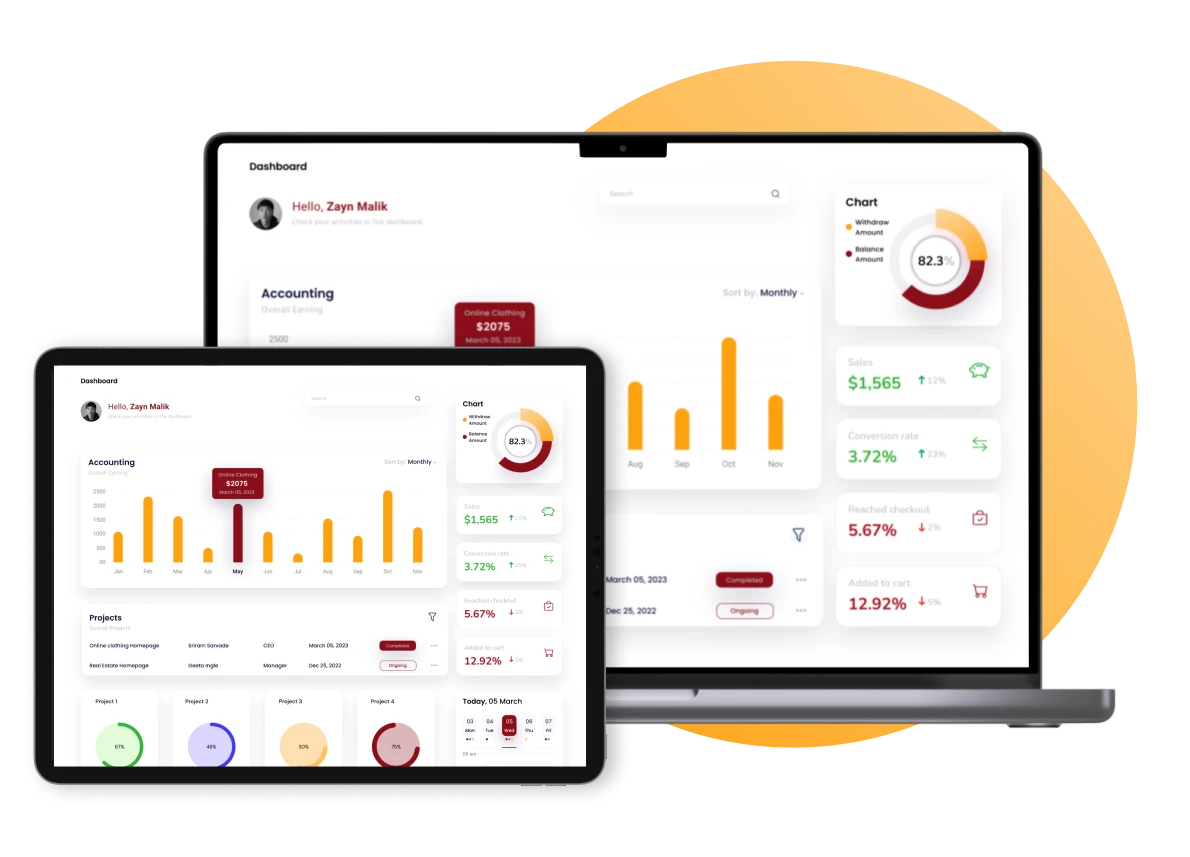Have you ever wondered how leading enterprises in Singapore maintain their competitive edge in a fast-paced business environment? One key aspect often lies in their adeptness at managing assets efficiently. But what does it take to excel in asset management, and why is it so crucial for your business?
From investing in cutting-edge ERP solutions to embracing the latest in GPS technology for asset tracking, we’ll explore how Singaporean businesses can transform their asset management approach to drive efficiency, reduce costs, and enhance operational effectiveness.
Table of Content:
Table of Content

Understanding Asset Management
Asset management is more than just keeping track of your company’s assets; it’s about optimizing their use to achieve the highest possible returns. In Singapore’s dynamic market, understanding the full scope of asset management can be the difference between staying ahead or falling behind.
In Singapore, where the economic landscape is characterized by rapid technological advancements, globalization, and stringent regulatory requirements, the importance of effective asset management software in Singapore is magnified. Businesses are compelled to adopt a proactive and strategic approach to manage their assets to sustain growth, remain compliant, and navigate the complexities of the market.
At the core of asset management is the principle of value optimization. This involves not just preserving the value of assets but enhancing it wherever possible. It requires a deep understanding of the market conditions, technological trends, and regulatory frameworks that influence asset performance and lifespan. For instance, in a technology-driven industry, managing assets might involve regular upgrades and maintenance to ensure they remain state-of-the-art and competitive.
Furthermore, effective equipment asset management in Singapore’s context also entails risk management and sustainability practices. Companies must assess and mitigate risks associated with their assets, such as obsolescence, depreciation, and operational failures. Sustainability practices, on the other hand, focus on ensuring that assets are managed in a way that minimizes environmental impact and promotes social responsibility, which is increasingly becoming a priority for businesses worldwide.
Asset Management Best Practices
Transitioning from the foundational understanding of asset management, we now venture into the realm of practical application with a series of best practices that can significantly elevate the efficacy of your asset management strategies.
Invest in Asset Management Software
Investing in robust asset management software, such as HashMicro, marks an important aspect in an organization’s asset management journey. These advanced platforms are not merely tools; they are transformative agents that redefine how assets are monitored, maintained, and optimized.
By integrating such software into your asset management strategy, you unlock a treasure trove of real-time insights and analytics, empowering you to make decisions that are not only informed but also strategic and forward-looking.
In the context of Singapore, the ability to rapidly adapt and respond to changes can set a business apart. Asset management software equips you with the agility needed to navigate these waters, offering features like predictive maintenance, asset tracking, and lifecycle analysis.
Moreover, the strategic investment in asset management software is more than just an operational upgrade; it’s a commitment to future-proofing your business. As the digital economy continues to evolve, the integration of such technologies will be pivotal in ensuring that your asset management practices remain robust, resilient, and responsive to the changing tides of the business landscape.
Conduct Regular Asset Inventories
Regular asset inventories involve a systematic review and documentation of all assets within an organization. This process goes beyond mere enumeration to include a thorough assessment of the condition, performance, and economic value of each asset.
In Singapore’s dynamic market, where technological advancements and economic shifts can rapidly change the landscape, such inventories become indispensable. They enable businesses to stay agile, adapt to market changes, and make informed decisions about asset acquisition, maintenance, and disposition.
Moreover, in the context of regulatory compliance and financial reporting, the importance of accurate asset inventories cannot be overstated. Singapore’s stringent regulatory environment demands transparency and accuracy in financial statements.
Regular asset inventories, supported by an asset reservation system, ensure that all assets are correctly valued and accounted for, reducing the risk of financial discrepancies. This system also helps prevent unauthorized use, minimizing the potential for legal and financial repercussions.
Develop an Asset Management Plan
The process of developing an asset management plan involves several key steps, beginning with a thorough inventory and assessment of existing assets. This inventory provides a clear picture of what assets are currently held, their condition, performance, and how they are being utilized.
It’s an opportunity for businesses in Singapore to take stock of their resources, identify gaps, inefficiencies, or redundancies in their asset portfolio, and make informed decisions about future asset investments.
Following the inventory, the next step is to align the asset management plan with the strategic goals of the organization. This alignment ensures that every asset acquired or maintained directly contributes to achieving business objectives, whether it’s expanding market reach, improving operational efficiency, enhancing customer satisfaction, or driving innovation.
Use GPS Technology to Track Mobile Assets Locations
The utilization of GPS technology to track mobile assets represents a significant leap forward in the domain of asset management, particularly within logistics-centric sectors that are prevalent in Singapore’s economy.
Incorporating GPS technology into asset management practices allows for real-time monitoring of mobile assets, such as vehicles, equipment, and even personnel. This real-time data is invaluable for businesses in Singapore, where timely deliveries and efficient resource allocation can significantly impact customer satisfaction and operational costs.
GPS tracking enables logistics managers to optimize routes, reduce fuel consumption, and prevent delays, directly contributing to improved service levels and reduced operational expenses.
Moreover, the use of GPS technology in tracking mobile assets also plays a crucial role in asset security. In an environment where assets are constantly on the move, the risk of theft, loss, or unauthorized use is heightened. GPS tracking mitigates these risks by providing constant visibility into the location of each asset.
Create Asset Tags
Asset tags, typically in the form of barcodes or RFID (Radio-Frequency Identification) tags, carry detailed information about the asset, such as its identification number, location, status, and maintenance history. This digitization of asset information facilitates a multitude of functions critical to business operations.
For instance, maintenance teams can quickly scan an asset tag to access its entire service history, making informed decisions about the required maintenance or repairs, thereby reducing downtime and extending the asset’s lifespan.
Prioritize Safety
The integration of safety protocols in asset management involves a comprehensive approach, beginning with the thorough risk assessment of all assets. This assessment identifies potential hazards associated with each asset, including operational risks, environmental hazards, and risks related to obsolescence or improper use.
Implementing safety measures in asset management also involves regular maintenance and safety checks, ensuring that all assets are in optimal working condition and do not pose any risk to the users or the environment. This practice is particularly relevant in industries like manufacturing and construction, where machinery and equipment are integral to operations.
Regular maintenance not only extends the lifespan of assets but also ensures that they operate within the safety parameters, reducing the likelihood of accidents and enhancing the overall safety of the workplace.

Need to Know
Automate and Improve Data Collection
The automation of data collection minimizes human error. It’s a critical factor in ensuring the accuracy and reliability of asset data. Also forms the backbone of strategic decision-making and operational planning.
ERP systems play a pivotal role in this transformation by providing a centralized platform. It’s collecting, storing, and analyzing asset-related data. This centralized approach ensures consistency in data management. Then, facilitates easy access to information across different departments and levels of management.
Furthermore, the automation of data collection extends beyond mere operational convenience. It enables a depth and breadth of data analytics that was previously unattainable with manual methods.
With ERP systems, businesses can leverage advanced analytics and AI-driven insights to uncover patterns. Also predict trends, and make informed decisions about asset utilization, maintenance, and investment.
Also read: What is an Asset Management System? Its Benefits & Features
How HashMicro Helps with Asset Management Practice
HashMicro’s ERP solutions are suitable with Singaporean enterprises in mind, offering customizable modules that cater to specific asset management needs, from real-time tracking to comprehensive analytics.
The following features are instrumental in enhancing asset management:
- Asset Cost Report: This feature provides a comprehensive overview of the costs associated with each asset, including acquisition, maintenance, and operational expenses.
- Maintenance Repair Approval Stages: HashMicro’s ERP systems incorporate multi-tiered approval processes for maintenance and repair activities, ensuring that all maintenance tasks are thoroughly reviewed and authorized at various levels before execution.
- Internal Transfer Request: The ability to efficiently manage the internal transfer of assets between departments or locations is a key feature of HashMicro’s ERP solutions. This functionality supports the dynamic allocation of assets within an organization.
- Asset Stock Take: HashMicro’s ERP systems automate the stock-taking process, making it more efficient and less prone to errors. This feature provides real-time visibility into asset inventories, reducing discrepancies, and ensuring that asset records are always up-to-date.
- Employee Asset Management: This feature allows businesses to track and manage assets assigned to employees, such as laptops, mobile devices, and vehicles.
Incorporating these features, HashMicro’s asset solutions provide a comprehensive asset management framework that addresses the unique challenges and opportunities presented by Singapore’s business landscape.
From detailed cost analysis and streamlined maintenance processes to efficient internal transfers, automated stock-taking, and effective employee asset management, HashMicro equips businesses with the tools they need to manage their assets strategically.
If you curious about HashMicro, you can download the price scheme below.
Conclusion
In the bustling economic landscape of Singapore, mastering asset management best practices is not optional—it’s essential. With the right strategies and tools like HashMicro’s asset solutions, your enterprise can not only safeguard its assets but also unlock new levels of efficiency and growth.
Ready to elevate your asset management game? Discover how HashMicro’s asset management software can transform your business. Schedule a free demo today!





































